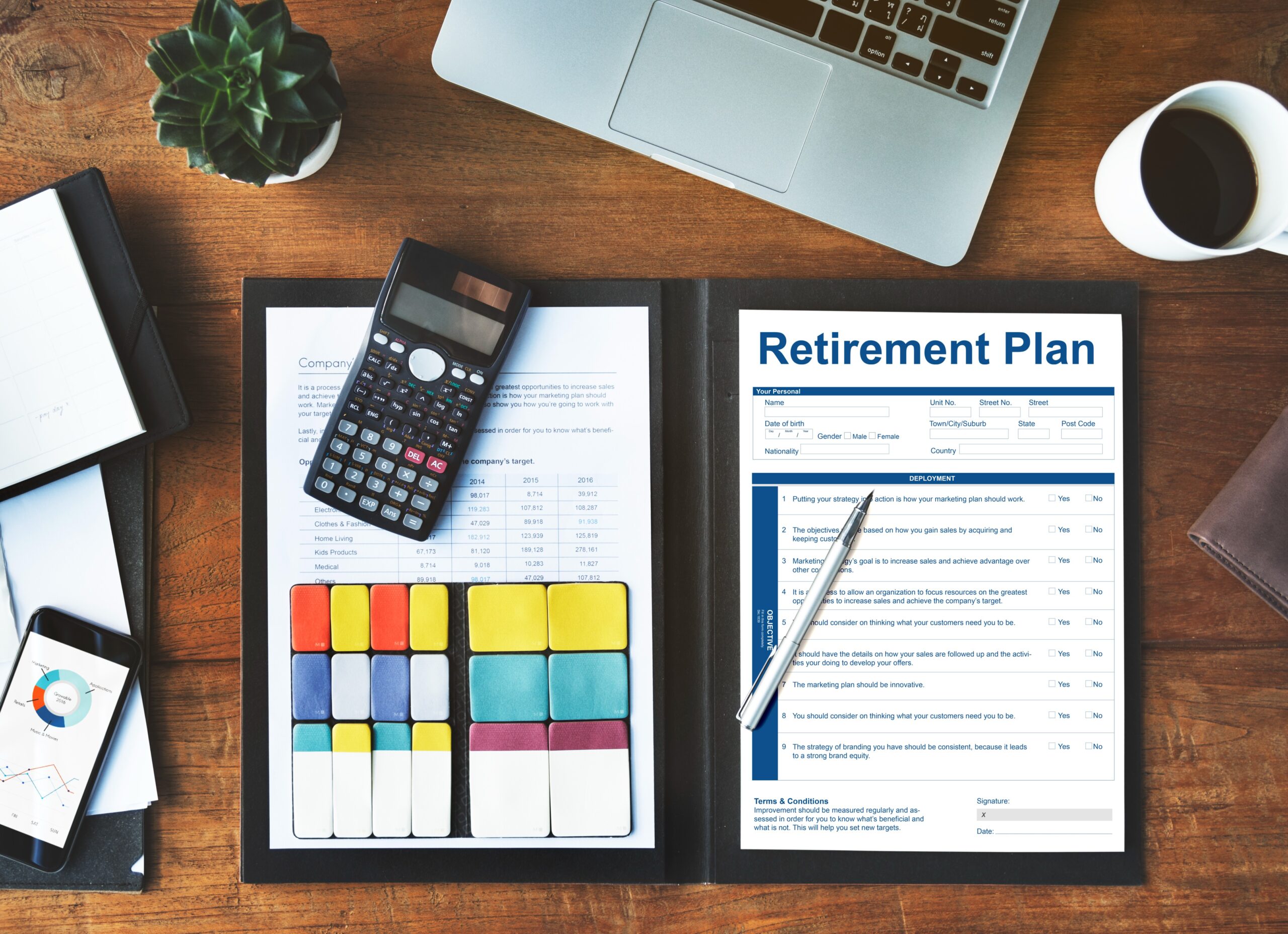Living in the shadow of financial instability can be an unpleasant experience. Money is constantly on our minds as we attempt to plan for the future. Do you want to purchase a home to reside in one day, or is there an emergency, or does your youngster just want a new bike? Do you want to get out of student loan debt? Is it time to put a stop to your credit card addiction? It doesn’t really matter how large or small these matters are when it comes to your money, since they all have an impact.
It’s been a two-year financial education for everyone on the planet to live in the midst of a pandemic. Especially in the face of a crisis that appears to go on forever, no one is ever really prepared. It is important to make financial objectives for the foreseeable future in order to improve your financial situation.
What are financial goals?
Savings, investing, and spending objectives are all examples of financial goals. Having a strategy for your money is what we mean when we say “financial aim.” They help you understand why you’re putting your hard-earned money into a savings account. To achieve our financial objectives, we must first learn to prioritize our responsibilities and make better use of our financial resources. Regardless of how long it takes, your objectives should serve as a source of motivation and accountability, no matter how long it takes to achieve them.
You may create short-term, mid-term, and long-term financial objectives based on where you are in your life cycle. A short-term aim might be saving money for your forthcoming summer vacation, while a long-term goal would be saving money for your children’s college education.
Now let’s look at how you may create realistic and attainable financial objectives.
Write down your goals
The first step to reaching your financial objectives is to write them down. It is much more effective to begin the process in this manner than to only think for your financial objectives. It is essential that each objective be measurable, action-oriented, practical, and has a time frame. Make a list of all the ways you can save money, decrease costs, earn more money, or uncover more resources to help you achieve your objective.
Create categories
All of your financial objectives must be classified according to the time frame in which they must be achieved. Make a list of your short-term, medium-term, and long-term goals. There are three types of objectives: short-term goals that can be accomplished in a year or less, mid-term goals that can be accomplished in one to 10 years, and long-term goals that can be accomplished in more than 10 years.
Prioritize
Prioritizing your financial goals is an important step after making a list of your goals and deciding on a timeline for reaching them. When setting financial goals, prioritizing is critical. Making a priority list can help you stay focused on your long-term objectives and the timeline you’ve set for them. Use the terms Want, Need and Critical to describe what you want. When it comes to improving your financial situation, these three words have a huge impact. Think at it this way: you’ve been wanting a new pair of shoes for a while, but the ones you want cost a little more. This would fall into the Want category since it is simple to get, but you may always postpone the purchase if anything unexpected occurs.
Set a deadline
If your objectives are not time-sensitive, will you ever fulfill them? Avoid making empty promises about starting a savings account down the road. Take immediate action, and set deadlines that are both acceptable and demanding, but not impossible. It’s satisfying to cross off each goal-related checkpoint along the way, and deadlines are no exception. And if you need to move the date, that’s okay; unexpected things happen to everyone.
Create a budget and set up an emergency fund
Make a budget plan if you don’t already have one in place. Keep your other goals on track by minimizing excessive spending and under-saving by using this method of budgeting. Take the 50/30/20 budgeting technique, as recommended by our team of experts. To put it another way, you should put 50% of your income toward necessities, 30% toward desires, and 20% for emergency funds and debt reduction.
Unexpected costs may be paid for using an emergency fund, which is a defined amount of money put aside only for that purpose. $500 to $1,000 is a reasonable starting point. When you reach that goal, you’ll want to extend it so that your emergency fund can handle more serious financial issues, such as job loss. If you didn’t have an emergency fund before the COVID-19 outbreak, you probably wish you had one now. If you did have one, you may have used it and need to renew it.
Setting financial objectives may not always go according to plan, and that’s perfectly fine. Make rapid modifications to your goals in the event of an emergency, and don’t beat yourself up. You’ll be on track in no time if you stick to your savings plan. At this point in the article, you have all the information you need to begin planning for your financial future. Do your best!
Your retirement planning should begin as soon as possible, whether you’re just beginning your career or are towards the ending. One thing to keep in mind while contemplating retirement is that the sooner you begin, and the better off you will be in the long run. Plus, you are not alone in this situation. There are many individuals who have begun saving for retirement later in their career because of some suggestions on how to optimize retirement savings. The advice in the following article is sure to come in handy as you work toward your retirement goals.
The earlier you start, the better
The most important piece of retirement investing advice is to get started right now!! Compounding returns work best when your money has time to grow. Even if you don’t have a lot of money to invest right now, you may still enjoy the benefits of compound interest. Any start, no matter how small, will have an impact over time. If you’re just starting out, start with a little amount and gradually raise it over time. Smart, isn’t it?
Grab the 401(k) or 403(b) company match
It’s a good idea to contribute up to the amount your company matches if you have a retirement plan at work. It will be simpler for you to save a larger amount over time because of the 401(k) and 403(b) plans.
For-profit corporations provide 401(k) plans to qualifying workers who make pre- or post-tax contributions via payroll deductions, while non-profit and government employees have access to 403(b) plans. However, 403(b) plans are excluded from testing for non-discrimination.
Consider opening an Individual Retirement Account (IRA)
Having an Individual Retirement Account (IRA) can help you develop a pension pot. There are two kinds of individual retirement accounts (IRAs): traditional IRAs and Roth IRAs. An Individual Retirement Account (IRA) may provide you with a wider range of low-cost investments.
Depending on your income and whether or not you or your partner are qualified to participate in a company retirement plan, a Traditional IRA may be a better option for you. Withdrawals in retirement may be tax-deferred, and payments to a Traditional Individual Retirement Account (IRA) may be deductible.
To qualify for a Roth Individual Retirement Account, you must meet the phased-out modified adjusted gross income (MAGI) limits depending on your federal tax filing status. Depending on the holding period rules, payouts may be tax-free in both the state and federal levels.
Go double with your plan retirement contributions
Due to specific catch-up rules, some teachers, healthcare workers, public sector, and non-profit employees can contribute twice as much to retirement plans. The requirements of this section apply to certain participants in plans covered by Sections 457(b) and 403(b). Additional information is available on the Internal Revenue Service (IRS) website.
Retire in the right state
Alaska, Florida, Nevada, New Hampshire, South Dakota, Tennessee, Texas, Washington, and Wyoming are among the nine states in the United States without state income taxes, making them attractive retirement destinations. However, dividends and interest are taxed in New Hampshire.
Be consistent with saving
Consistency is crucial in retirement saving as it is in any other field. In your early career years, you are in a strong position since you have a long time ahead of you in terms of earning potential. Many future paychecks and many contributions to retirement are on the table as a result of this. Thinking ahead will benefit you in the future. Also, don’t just waste your money if you have extra. The best method to boost your retirement savings is to enhance the percentage of your salary that you contribute every time you get a raise.
Automate your savings
If you’re like most people, you’ve heard the expression “pay yourself first.” Choosing to automate your monthly contributions is a wise decision, as this will make it easier to grow your pension fund without having to worry about it too much.
Set a goal
Recognizing the amount of money that you could be saving might not only assist you in better understanding why you are saving, but it can also make the process more pleasurable. Setting goals and achieving them along the way will help you feel more satisfied as you work toward your retirement savings goal.
If you want to get the most of your retirement funds, you need to start planning for it as early as possible. Long-term financial success is more likely when you begin early and keep up a consistent planning schedule. It’s a typical aim for many people to retire at some point in life. In the end, your retirement savings will determine how comfortable you can live and if your money will outlast you. Be strategic in your planning!

